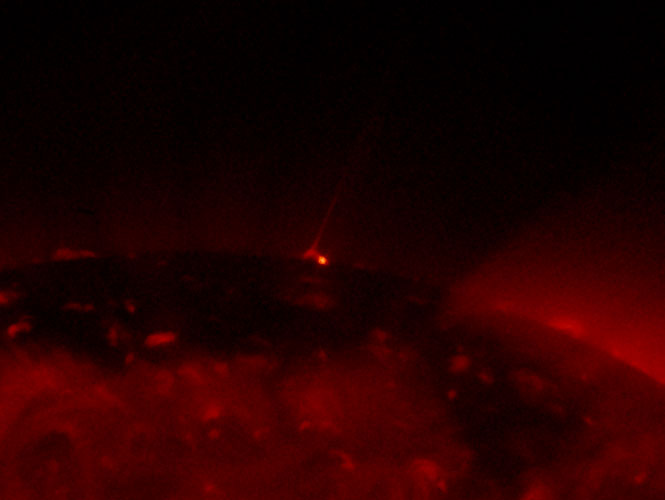
 Credit: SAO/NASA/JAXA/NAOJ
Credit: SAO/NASA/JAXA/NAOJ
Sunburst
The sun is shrinking. A startling idea, but one that astronomers have known for decades. The "shrinking" takes the form of a wind of particles that stream from the surface of the sun out into space. Sometimes this leakage is rather strong: so-called "solar storms" blow from the sun into the rest of the solar system, interacting with planets and things which orbit planets, like (in the case of our dear earth) communications or other human-made satellites. The origin of this "solar wind" has been something of a mystery, involving the sun's complicated magnetic field. Now astronomers using a solar satellite called Hinode have found important new details about how the sun's magnetic fields interact with the solar atmosphere to form the solar wind. The image above shows an X-ray image of the sun. In this image, the disk of the sun is dark, since, even though incredibly hot by usual standards, it's still too cool to produce much X-ray emission. The reddish glow surrounding most of the solar disk is the solar corona, a region of hot gas above the surface. The darker region near the top of the image is a "coronal hole" where the temperature of the corona is smaller than the surrounding, and which therefore produces fewer X-rays. In the middle of this hole is an X-ray jet launching plasma out into the solar system. Hinode's telescopes have shown that such X-ray jets are much more common than previously determined - occurring many hundreds of times a day.
<
HEA Dictionary ● Archive
● Search HEAPOW
● Other Languages
● HEAPOW on Facebook
● Download all Images
● Education ● HEAD
>
Each week the HEASARC
brings you new, exciting and beautiful images from X-ray and Gamma ray
astronomy. Check back each week and be sure to check out the HEAPOW archive!
Page Author: Dr. Michael F. Corcoran
Last modified Tuesday, 27-Feb-2024 10:08:18 EST


